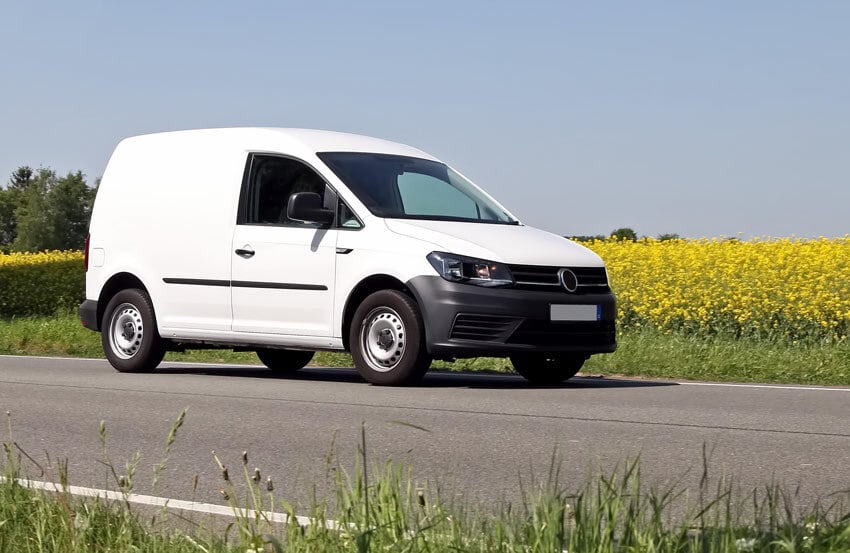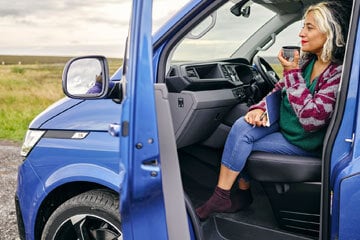Van or car? At first it may seem obvious, but identifying whether your vehicle is a car or a van may be trickier than you think. With many types of vehicles blurring the lines - such as minivans, SUVs and large dual-purpose vehicles - the distinction between a van or car may be paper thin. Here's how to tell, and why it's important for insurance purposes.

How to identify your vehicle: car or van?
Let's get straight down to it - using your V5C. You can determine whether your vehicle's a van or a car by checking the following:
- Where? Look at line J of your V5C logbook. This shows your vehicle category.
- HMRC also has its own definitions used for tax purposes (see below).
There are certain specifications which will class your vehicle as a van - namely if it weighs over 1,000kg and has an area or bay for loading goods.
Why your vehicle type affects your insurance policy
Why does this matter? Well, for starters it determines whether or not you should buy car insurance or van insurance. Your vehicle needs the right type of insurance in place for you to drive it legally.
As vans are commonly used for work or business purposes, they come with different risks to regular cars. They're likely to cover more miles annually, go to more work and construction sites, and carry more tools, goods and materials. Van insurance is more specifically tailored to cover such risks.
On the other hand, cars are usually driven for domestic, social and pleasure purposes. If you use the car for commuting, this requires an extra level of cover. And if you use it for business, this is another level again.
Not having the right type of insurance in place could lead to a fine, as well as the invalidation of your policy. So it's really important to buy the right policy.
Is it cheaper to insure a car or a van?
According to the Confused.com car insurance price index, the average comprehensive car insurance policy in Q4 2024 was £834. Whereas the average van insurance policy is £729.31*.
*According to Confused.com data, Q4 2024.
Understanding tax and legal differences between cars and vans
The right insurance isn't the only reason why the distinction is important. Cars and vans are also taxed differently.
The tax bands for vans are different from cars. They take into account the age of the van, its CO2 emissions and engine size. But otherwise you tend to get charged a flat rate, which doesn't take into account the type or size of the van. And VED (often known as road tax) for vans often works out cheaper than it does for cars.
In addition, it's different if you're getting an MOT for your car than getting an MOT for your van. Vehicle checks such as MOTs and services are priced differently too.
Car vs van: key differences in design and use
Generally speaking, the main difference between vans and cars is their intended use. As goods-carrying vehicles, vans tend to be used for business.
But there are key design and specification differences too.
Identifying a car
For tax purposes, HMRC defines a car as any "mechanically propelled road vehicle that is not":
- "A goods vehicle (a vehicle of a construction primarily suited for the conveyance of goods or burden of any description)" (in other words, a van)
- A vehicle which isn't suitable for use as a private vehicle - such as a racing car or quad bike
- A motorbike
- "An invalid carriage", such as a mobility scooter
To be classed as a car, the vehicle must also:
- Have three or more wheels
- Generally be used on public roads
- Be built or adapted for carrying passengers
- Have roofed accommodation behind the driver's seat with side windows
Identifying a van
One of the main ways of telling a van from a car is that the vehicle is designed to carry goods rather than people. But there are a few more identifying features:
- The maximum authorised weight (MAM) - in other words, its total weight when fully laden - doesn't exceed 3,500kg.
- It doesn't have side windows in the rear.
- It has eight seats or more.
- It has a double cab.
- There's a pick-up bed in the rear, designed for cargo. This may have a roof, or be roofless (as with pickups).
Also the vehicle doesn't need to meet all of these criteria to be classed as a van. Caravans, prison vans or ambulances are classed as vans, for instance, but don't necessarily tick all these boxes.
Are vans more expensive to run than cars?
While it depends on the van, or the car you're comparing it with, vans are typically more costly to run than cars. This is because:
- They tend to be bigger and heavier, so will get fewer miles per gallon (mpg). This means you'll be spending more on fuel.
- Van insurance is usually more expensive.
- Maintenance costs are similar, but the parts can be more expensive for vans. And if it's getting a lot of use, certain parts may wear out more quickly.
As mentioned, it's only road tax where vans may have the edge over cars. Otherwise, you can expect to pay more to run a van.
What makes a car-derived van unique?
As stated in the Road Traffic Regulation Act 1984, a car-derived van is a vehicle which was originally a car, but adapted to carry goods like a van.
As such, they look like a normal passenger car from the outside. But there won't be rear seats, or side windows in the back. Rather, the rear will have an area in the back with a floor panel, designed to carry a payload.
Unlike other vans, which can carry up to 3,500kg when fully laden, car-derived vans cannot have a MAM which exceeds 2,000kg.
Can you use a van for personal and business purposes?
Yes, provided you have the right van insurance policy in place. If you've bought business van insurance, this should cover you for commercial purposes, and personal journeys too.
Be aware that, if you use a company van that belongs to your employer, there may be tax implications. If you regularly make personal trips using a company car, you'll need to pay benefit in kind (BIK) to the HMRC. This is a type of tax on certain benefits.
Note that you will not need to pay this if you're self-employed or a sole trader.
What are the different types of vehicles?
We've established that some vehicles which appear to be cars may actually be vans (such as a VW Caddy), and vice-versa. To hopefully add a bit more clarity, here are some common vehicle classifications.
Passenger vehicles
While this generally does what it says on the tin, there are a few categories to be aware of:
- M1: Used for carrying passengers. Have 8 seats or fewer, plus the driver’s seat.
- M2: Used for carrying passengers with more than 8 seats plus the driver’s seat. Have a maximum mass of 5,000kg.
- M3: Used for carrying passengers with more than 8 seats plus the driver’s seat. Have a maximum mass of over 5,000kg.
Commercial vehicles
This is any motor vehicle which is used for work or business reasons, rather than personal or private use. This might include things like heavy goods vehicles (HGVs), lorries and large vans. But commercial use isn't limited to carrying goods - it can also include buses, coaches and so on.
Trailers
These are wheeled vehicles without an engine. You tend to tow them to transport goods and materials. Note that you need the right type of driving licence for this. Find out what licence you need for a trailer at GOV.UK.
Pickups
Pick-up trucks or pickups usually have an enclosed cabin with an open bed, used for storing cargo. These are classed as vans rather than cars.
So if you've ever wondered whether the popular Ford Ranger is a car or a van: it's a pickup, therefore it's a van.
Tippers
Tipper trucks are flatbed vans which can tip the cargo area (hence the name), meaning the contents slide off. As such, they're useful for big, bulky cargo that you don't mind getting a bit roughed-up.
For more information, check out our guide explaining the different van body types.







